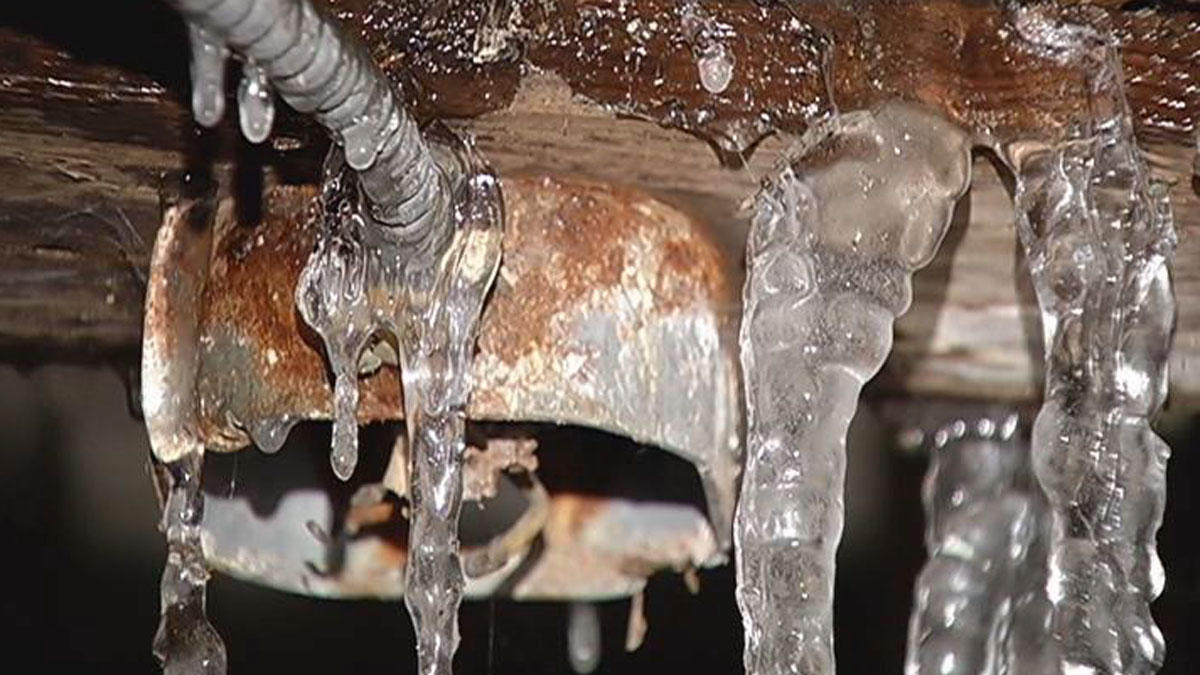Essential Tips to Avoid Frozen Pipes in Winter: Specialist Guidance
Essential Tips to Avoid Frozen Pipes in Winter: Specialist Guidance
Blog Article
Any individual has their personal opinion about Helpful Tips to Prevent Frozen Pipes this Winter.

Cold weather can damage your pipes, especially by freezing pipelines. Here's just how to prevent it from taking place and what to do if it does.
Introduction
As temperatures decline, the risk of frozen pipelines increases, potentially bring about costly repair services and water damages. Understanding exactly how to avoid icy pipelines is essential for house owners in cool environments.
Avoidance Tips
Shielding vulnerable pipes
Wrap pipes in insulation sleeves or make use of heat tape to shield them from freezing temperatures. Concentrate on pipelines in unheated or exterior locations of the home.
Heating strategies
Keep indoor rooms adequately heated up, specifically areas with pipes. Open up cupboard doors to permit warm air to distribute around pipelines under sinks.
How to recognize frozen pipes
Try to find lowered water flow from faucets, uncommon smells or sounds from pipes, and visible frost on subjected pipelines.
Long-Term Solutions
Architectural adjustments
Consider rerouting pipes away from exterior wall surfaces or unheated areas. Include extra insulation to attic rooms, basements, and crawl spaces.
Updating insulation
Invest in high-quality insulation for pipes, attic rooms, and walls. Correct insulation helps preserve regular temperatures and lowers the risk of frozen pipelines.
Protecting Outside Pipes
Yard hose pipes and outside taps
Disconnect and drain garden pipes prior to winter. Set up frost-proof spigots or cover outside taps with shielded caps.
Understanding Frozen Pipes
What causes pipes to freeze?
Pipes freeze when exposed to temperatures below 32 ° F (0 ° C) for extended periods. As water inside the pipes freezes, it broadens, putting pressure on the pipe wall surfaces and possibly causing them to break.
Dangers and damages
Frozen pipes can result in water disruptions, residential property damage, and costly repairs. Burst pipes can flooding homes and trigger extensive architectural damages.
Signs of Frozen Water Lines
Determining frozen pipelines early can avoid them from rupturing.
What to Do If Your Pipes Freeze
Immediate activities to take
If you think icy pipelines, keep taps available to alleviate stress as the ice melts. Make use of a hairdryer or towels soaked in warm water to thaw pipes gradually.
Final thought
Protecting against frozen pipelines requires aggressive measures and fast responses. By comprehending the reasons, signs, and preventive measures, home owners can protect their plumbing throughout winter.
6 Proven Ways to Prevent Frozen Pipes and Protect Your Home
Disconnect and Drain Garden Hoses
Before winter arrives, start by disconnecting your garden hoses and draining any remaining water. Close the shut-off valves that supply outdoor hose bibs and leave the outdoor faucet open to allow any residual water to drain. For extra protection, consider using faucet covers throughout the colder months. It’s also important to drain water from any sprinkler supply lines following the manufacturer’s directions.
Insulate Exposed Pipes
Insulating your pipes is an effective way to prevent freezing. Pipe insulation is readily available at home improvement stores and is relatively inexpensive. Pay close attention to pipes in unheated areas such as the attic, basement, crawl spaces, or garage. Apply foam insulation generously to create a buffer against the cold. You can also wrap your pipes in heat tape or thermostat-controlled heat cables for added warmth.
Seal Air Leaks
Inspect your home for any cracks or openings that could let in cold air. Seal any holes around the piping in interior or exterior walls, as well as the sill plates where your home rests on its foundation. Additionally, make sure to keep your garage door closed unless you’re entering or exiting. Leaving it open creates a significant air leak that can lead to frozen pipes.
Allow Warm Air Circulation
During cold snaps, it’s essential to allow warm air to circulate evenly throughout your home. Leave interior doors ajar to promote better airflow. Open kitchen and bathroom cabinets to help distribute heat consistently around the rooms. If you have small children or pets, be sure to remove any household chemicals or potentially harmful cleaners from open cabinets for safety.
Let Faucets Drip
A small trickle of water can make a big difference in preventing ice formation inside your pipes. When temperatures drop significantly, start a drip of water from all faucets served by exposed pipes. This continuous flow helps prevent the water from freezing. Additionally, running a few faucets slightly can relieve pressure inside the pipes, reducing the chances of a rupture if the water inside does freeze.
https://choateshvac.com/6-proven-ways-to-prevent-frozen-pipes-and-protect-your-home/

I am just very serious about Preventing and dealing with frozen pipes and I hope you liked my entry. Appreciated our piece of writing? Please share it. Help somebody else check it out. Thank-you for your time spent reading it.
Request Free Estimate Report this page